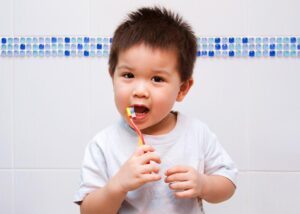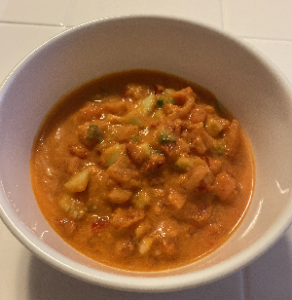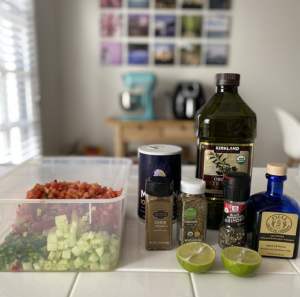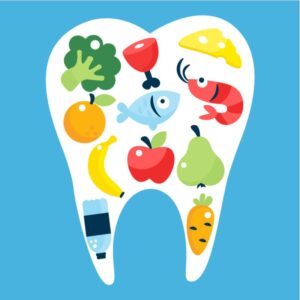August 25th, 2020

Did you know that it is recommended for parents to help their children brush their teeth until their child is at least 7-8 years old? You may say "Wow! We still need to help them even when they are that old?" The key thing here isn't only the age, but how well is your child brushing their teeth? Every child is different. We have seen 5 year old children who are perfect brushers, and we have seen some 10 year old children who still need that extra help. What matters the most is what to look for as you're helping your child brush in order to help guide them towards better brushing on their own.
Here are our tips to help you brush with your child:
- Each tooth has 3 "sides" that need to be brushed: the cheek side, the tongue side, and the biting surface. For the front teeth, you would brush the lips side, the tongue side, and the biting surface.
- Look at the area where the gums touch the tooth, are there a lot of white/yellow food particles stuck there? This is what we call plaque! It is important to help your child brush these areas to prevent cavities.
- The areas where plaque likes to stick the most are the cheek sides of the upper teeth and the tongue sides of the lower teeth. With the cheeks and tongue squishing against those sides of the teeth, it's hard for your child to brush there, so spend extra time checking these spots!
- Divide the mouth into 4 different sections - upper right, upper left, lower left, lower right. Spend 30 seconds brushing each section, which will equal a total of 2 minutes of brushing!
- Don't forget to brush the tongue! If the tongue remains white and coated over time, this can be a cause of stinky breath!
- Over time, as you work with your child to brush their teeth, they will know what to look for when they are brushing. They can brush on their own first, then you as the parent can check their brushing and help remind them of any places they have missed. Then before you know it, they'll be able to brush super well on their own!
- As a rule of thumb, children are usually able to brush their teeth on their own once they know how to tie their own shoelaces. This demonstrates that they have enough hand motor skills in order to brush their teeth effectively!
We hope these tips help you and your child become a better brushing team together!
August 6th, 2020

With the pandemic still on our minds, it's really important to not only keep up good hand hygiene but good oral hygiene as well! Did you know that a single toothbrush can hold as many 1.2 million bacteria? That's a lot!
So how do you take care of your toothbrush and how often do you need to change them out? These are great questions! A healthy and clean toothbrush means a healthy child!
How can you take care of your child's toothbrush?
- After using the toothbrush, shake it vigorously under tap water and store it in an upright position so that it can air out
- Make sure the toothbrush dries between uses
- Keep the toothbrush from touching other toothbrushes when it is stored - you don't want to pass any germs or viruses between the brushes
- Plastic cases are great to protect the toothbrush bristles, but make sure to allow the toothbrush to dry in the open air to reduce the spread of germs
How often should you change your child's toothbrush?
- It is recommended to change your toothbrush every 3 months
- Studies have shown that after 3 months of normal wear and tear, the toothbrush becomes less effective at removing plaque from your child's teeth!
- Over time, bristles break down and lose their effectiveness at getting into all the tiny grooves on your child's teeth
- And super important! - if your child has had a cold, flu, mouth infection, or sore throat - change out the toothbrush! Germs can hide in the bristles and cause reinfection. We don't want your child to get sick again!
Keeping up the good habit of changing out your toothbrush often will not only keep your child's smile clean and bright, but also keeps your child healthy!
July 21st, 2020

It's summer time! The sun is out and the weather is heating up. What better way to cool down than with a cool refreshing recipe that will be fun to make for your kids? It's always hard to get children to eat more vegetables, but this veggie packed soup will allow you to sneak in all the nutrients that are great for your child!
Crunchy vegetables are the best for your child's teeth! As they chew, the hard texture will help prevent things from sticking to their teeth, making it less likely for your child to get cavities. Of course, this doesn't mean that they don't have to brush - we don't like having things stick to our teeth!
Also, if your child is a picky eater, this soup gives new sensations that will make it fun to eat! It's colorful from the different vegetables, it has crunchy and soft textures, and best of all - it's a soup that's cold! We hope this simple recipe brings some fun into your kitchen!

Summer Gazpacho
Prep time: 30 minutes
Total time: 2 hour 30 minutes
Servings: 6
Ingredients
- 4 large fresh tomatoes, peeled and diced (or 8 small fresh tomatoes)
- 1 pint cherry tomatoes (or 2 small fresh tomatoes)
- 1 cucumber, peeled and diced
- 1 red bell pepper, seeded and diced
- 1 jalapeno pepper, seeded and diced (can substitute for a green bell pepper if you do not want any spiciness)
- 2 cloves garlic, minced
- 1 teaspoon salt
- 1/2 teaspoon ground cumin
- 1 teaspoon dried oregano
- freshly ground black pepper to taste
- 1/4 cup extra-virgin olive oil
- 1 lime, juiced
- 1 tablespoon balsamic vinegar
- 2 tablespoons thinly sliced fresh basil
Directions
- Combine diced tomatoes, cucumber, bell pepper, jalapeno, and garlic in a large bowl. Stir in salt, cumin, oregano, and black pepper.
- Place cherry tomatoes, olive oil, lime juice, and balsamic vinegar in a blender. Cover and puree until smooth. Pour pureed mixture into the tomato-cucumber mixture. Stir to combine.
- Place 1/3 of the tomato mixture back into the blender. Cover and puree until smooth. Return pureed mixture to the remaining tomato mixture. Stir to cobine.
- Cover and chill in the refrigerator for 2 hours.
- Season cold soup with salt and black pepper to taste. Top with fresh basil. Enjoy!
Visit our Instagram page for an short instructional video of this recipe!
July 10th, 2020

In order to make sure the food your child eats is good for their teeth, make sure they have a balanced diet! Include fruits and vegetables, breads and cereals, milk and dairy products, and meat, fish and eggs. In addition, you want to limit the servings of sugars and starches that your child eats to protect their teeth from cavities. We are never saying "no sugar" or "no candy" ever! The most important thing is everything in moderation - it has to be balanced!
Let's talk about the foods that are the BEST for your child's teeth:
- Fiber-rich fruits and vegetables
- Foods with fiber help keep your teeth and gums clean!
- They also get your saliva flowing - increasing amount of saliva in your mouth helps to reduce the effect of any acid that can attack teeth and start cavities. Saliva also helps to restore the essential minerals to teeth.
- Cheese, milk, plain yogurt
- The calcium in dairy products help to put minerals back in your teeth where they have been lost and helps to rebuild tooth enamel, the protective layer of your teeth!
Now what about the foods that can be bad for your child's teeth:
- Sticky candies and sweets
- The bacteria that live in our mouths love sugar! They use this sugar to produce an acid that breaks down your teeth, causing cavities!
- Sticky candies love those deep grooves in your teeth and they stick there really well if you don't brush! The longer the candy stays on the tooth, the higher chance of getting a cavity!
- If you were to choose a sweet to eat, chocolate would be the best! It melts in your mouth and doesn't stay there like the sticky candies do!
- Starchy foods such as cookies and crackers
- These soft foods become sticky after they are chewed and stick to your teeth just as how sticky sweets would!
- Carbonated soft drinks
- Not only do these drinks contain a lot of sugar, it is also very acidic that can contribute to wearing away at your tooth enamel, the protective layer of your teeth!
Here's our recommendations (based on recommendations from the American Dental Association):
- Have your child eat sugary foods with meals, reducing the amount of time the sugar stays in your child's mouth! During meals, more saliva is produced, washing away pieces of food that can stay in the mouth.
- Limit between-meal snacks. As mentioned before, we don't want foods to be stuck in our teeth for a long time! If your child wants a snack, give them something nutritious, like fruit or veggies.
- Drink more water! Replace soda and juices with plain water.
- Always remember to help your child brush and floss 2x/day!
Remember - there's no right or wrong thing to eat, it's all about moderation. Make sure to eat balanced meals!






